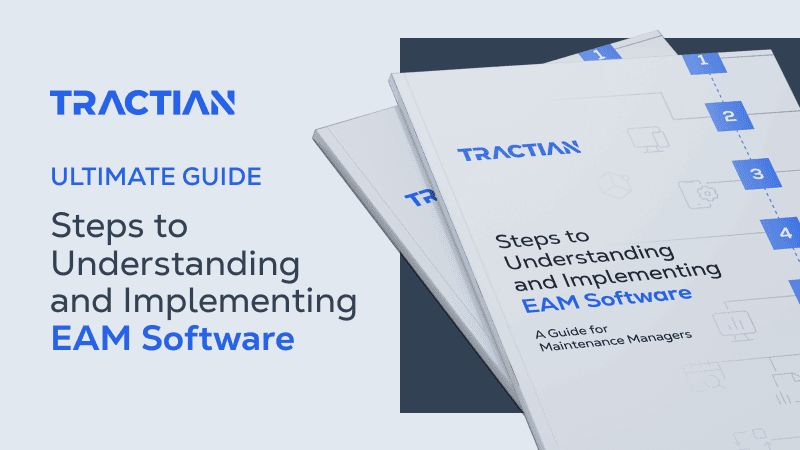Industrial operations rely on efficiency, precision, and resilience, but complex processes often lead to recurring challenges. Root Cause Analysis (RCA) is a powerful tool for tackling these issues at their source, preventing superficial fixes, and paving the way for meaningful, lasting improvements.
By identifying the underlying causes of failures, RCA empowers industries to optimize operations, minimize downtime, and boost productivity.
This guide explores how integrating RCA into your processes can transform how you manage failures and inefficiencies-driving a culture of continuous improvement and operational excellence.
What is Root Cause Analysis (RCA)?
Root Cause Analysis (RCA) is a structured methodology used to uncover the true source of failures, problems, or inefficiencies. Instead of providing temporary fixes, it identifies and defines the root issue, ensuring problems don’t resurface.
By addressing failures at their source, RCA enables teams to move beyond reactive solutions and adopt a proactive approach to maintenance and operations. It is widely used in healthcare, manufacturing, and other industries where efficiency and reliability are critical.
RCA utilizes various root cause analysis tools, such as fishbone diagrams and Ishikawa diagrams, to systematically break down complex issues.
In industrial maintenance, RCA plays a key role in improving asset reliability and operational efficiency.
Industries rely on this process to minimize unplanned downtime, optimize resource allocation, and implement corrective actions that lead to long-term, sustainable results.
By pinpointing what went wrong and why, teams can take strategic steps to prevent future failures and enhance overall performance. Unsurprisingly, RCA has become a cornerstone of proactive maintenance strategies.
History of Root Cause Analysis
Root Cause Analysis (RCA) has evolved from early industrial problem-solving techniques into a data-driven methodology applied across industries today.
Early Foundations
RCA traces its origins to the early 20th century when industrial engineers introduced systematic problem-solving to improve efficiency. In the 1940s, the U.S. military developed Failure Mode and Effects Analysis (FMEA) to assess system reliability, laying the foundation for structured failure investigations.
The Rise of RCA Techniques
Between the 1960s and 1980s, methodologies like the 5 Whys (Toyota Production System) and Fishbone Diagrams (Kaoru Ishikawa) became essential tools for identifying and visualizing root causes. These techniques helped organizations move beyond quick fixes and implement long-term solutions.
Modern Advancements
With digital transformation, RCA now leverages AI, IoT sensors, and predictive analytics to detect real-time failures. Today, industries use data-driven RCA to minimize downtime, improve asset reliability, and drive continuous improvement-ensuring operational efficiency in an increasingly fast-paced environment.
When Should You Perform a Root Cause Analysis?
Root Cause Analysis (RCA) is most effective when applied both proactively and reactively to address operational challenges. Knowing when to use RCA ensures long-term reliability, cost efficiency, and process optimization.
1. After Critical Equipment Failures
Unexpected breakdowns disrupt production, increase costs, and pose safety risks. RCA helps identify the root cause of failures, prevent recurring issues, and improve system reliability.
2. When Performance Declines
A drop in asset efficiency, product quality, or overall performance often signals an underlying issue. RCA pinpoints inefficiencies, allowing teams to optimize processes before minor setbacks become major failures.
3. During Compliance Investigations
Industries with strict regulatory standards-such as manufacturing, healthcare, and energy-use RCA to investigate safety incidents, environmental hazards, and quality control failures, ensuring compliance and risk mitigation.
4. When Maintenance Costs Spike
Frequent repairs and unplanned downtime drive up maintenance costs. RCA helps uncover recurring issues, enabling more effective maintenance strategies that reduce long-term expenses.
5. After Near Misses or Safety Incidents
While RCA identifies equipment failures at the root, it's also essential for uncovering after near misses or safety violations. Investigating these events helps prevent more serious accidents and strengthens workplace safety.
Benefits and Goals of Root Cause Analysis

Root Cause Analysis (RCA) is a game-changer in industrial operations, delivering measurable benefits that go beyond solving immediate problems.
By addressing the true root causes of failures, RCA drives operational efficiency, cost savings, and continuous improvement-making it an essential tool for industries committed to excellence.
Key benefits include:
Preventing Recurrences
One of RCA’s greatest advantages is its ability to prevent problems from recurring. RCA delivers lasting solutions instead of temporary, symptomatic fixes by identifying and addressing the fundamental causes of failures.
Structured root cause analyses ensure investigations go beyond surface-level observations, helping industries achieve long-term reliability.
Cost Reduction
RCA also plays a key role in reducing costs. By identifying and resolving issues early, companies avoid unnecessary expenses from repeated failures.
This aligns with total quality management (TQM) principles, fostering continuous improvement across operations. Through precise data analysis and targeted preventive actions, unplanned downtime is minimized, reducing production disruptions and cost overruns.
Increased Machine Availability
A significant outcome of RCA is improved machine availability. With structured maintenance strategies informed by RCA insights, equipment reliability significantly increases.
This translates into fewer unexpected interruptions, greater productivity, and enhanced operational efficiency.
Continuous Improvement
More than just a problem-solving method, RCA promotes a culture of continuous improvement within industrial environments.
By systematically addressing contributing factors to failures, teams can refine processes and strengthen quality control.
With tools like Ishikawa diagrams, fault tree analysis, and barrier analysis, industries can continuously enhance performance-driving long-term success. (More on that below.)
Core Principles of Root Cause Analysis
Root Cause Analysis (RCA) is built on a set of core principles that ensure investigations are thorough, accurate, and effective.
These principles provide a structured approach to identifying and eliminating the real causes behind failures and inefficiencies. Let’s take a closer look:
1. Focus on the Source of the Problem
RCA goes beyond addressing surface-level symptoms-it targets the true source of the problem. Instead of reacting to failures, it aims to identify and eliminate their root causes, preventing recurrence.
By focusing on the underlying issue, RCA delivers long-term solutions rather than temporary fixes, ensuring meaningful improvements.
2. Systematic Process
RCA follows a structured process to ensure accuracy in diagnosing and resolving failures. This includes data-driven investigations, detailed problem analysis, and corrective actions designed to eliminate recurring issues.
This systematic approach promotes consistency and reliability, helping teams reach conclusions that are both comprehensive and actionable.
3. Data-Driven Approach
Reliable, objective data is the backbone of effective RCA. The process relies on detailed data collection and analysis, including failure histories, maintenance records, and performance metrics.
By prioritizing fact-based insights over assumptions, teams can confidently validate their conclusions and implement solutions.
How to Conduct a Root Cause Analysis?
Conducting an effective Root Cause Analysis (RCA) in industrial settings starts with selecting the right methodology for the problem at hand.
The objective of RCA is to move beyond superficial fixes and target the actual source of failure. This requires accurately defining the problem and breaking down the sequence of events that led to it.
Techniques like Ishikawa Diagrams, the 5 Whys Method, and Failure Mode and Effects Analysis (FMEA) provide structured frameworks to thoroughly investigate and resolve underlying causes of issues, ensuring solutions are practical and sustainable.
1. Fishbone Diagram (Ishikawa Diagram)

The Ishikawa Diagram, also called the Fishbone Diagram, is a visual tool that categorizes potential causes of a problem.
It provides a structured way to break down business processes, allowing teams to identify the root of inefficiencies.
How to Use It:
- Draw the “skeleton” of the fish, labeling the problem statement at the head.
- Identify major categories of causes and create "branches" for each.
- Under each branch, brainstorm specific contributing factors, listing potential causes through team discussions.
This method enables teams to evaluate multiple influences simultaneously, leading to a deeper understanding of complex issues and identifying the true root cause.
2. 5 Whys

The 5 Whys Method is a simple yet powerful questioning technique that helps uncover the root cause of a problem by repeatedly asking “Why?” until the fundamental issue is revealed.
Practical Example:
- Why did the machine stop? → The motor burned out.
- Why did the motor burn out? → It overheated.
- Why did it overheat? → The ventilation system was clogged.
- Why was the ventilation system clogged? → Regular maintenance was not performed.
- Why wasn’t maintenance performed? → No preventive maintenance schedule was in place.
This process traces the failure back to its root cause-lack of preventive maintenance-allowing teams to implement meaningful corrective actions.
3. Failure Mode and Effects Analysis (FMEA)

Failure Mode and Effects Analysis (FMEA) is a preventive approach used to assess the impact of potential failure modes within a system.
How It Works:
- Identify potential failure modes and their effects on the system.
- Assign scores based on severity, likelihood of occurrence, and detectability.
- Multiply these scores to calculate the Risk Priority Number (RPN), which determines the urgency of each failure.
- Focus corrective actions on failure modes with the highest RPN to mitigate critical risks first.
This systematic approach ensures that resources are allocated efficiently, reducing operational risks and enhancing system reliability.
Choosing the Right Method for Your Industry
Each RCA method has distinct strengths, and the choice depends on the complexity of the problem and industry requirements:
- Use Ishikawa Diagrams for analyzing multiple interconnected factors.
- Apply the 5 Whys Method when a quick, simple root cause analysis is needed.
- Opt for FMEA in systems that require proactive risk management.
- Leverage causal factor analysis to explore deeper influences contributing to an issue.
- Utilize a Pareto Chart to prioritize problem areas based on their impact.
Resources to Improve RCA Practices
For teams looking to refine their RCA process, structured resources like a root cause analysis RCA PDF or root cause analysis report template can simplify documentation and analysis.
Additionally, industry guides and root cause analysis books provide valuable insights for improving investigative strategies and ensuring long-term operational success.
Tips for Performing Effective Root Cause Analysis
Root Cause Analysis (RCA) is a powerful tool, but its effectiveness depends on how it is executed.
A well-structured RCA isn’t just about identifying what went wrong-it establishes a process that improves reliability, reduces downtime, and fosters continuous improvement. Here are three practical tips to ensure your RCA efforts deliver lasting impact.
Work With a Team and Get Fresh Perspectives
RCA is most effective when it's a team effort. Involving team members from different roles-technicians, engineers, operators, and managers-ensures a well-rounded, comprehensive analysis.
Everyone sees problems differently, and those perspectives often reveal contributing factors that a single viewpoint might miss.
Collaboration doesn’t just enhance the quality of your analysis; it also builds alignment and buy-in for the solutions you’ll implement.
The more diverse your input, the better equipped you’ll be to address the root problem effectively.
Plan for Future RCAs Proactively
Although RCA is often performed after a failure, it is far more effective when used proactively. Root cause analysis methods such as barrier analysis and sequence of events tracking help teams detect patterns before breakdowns occur.
Patterns like repeated downtime or unexplained performance drops are opportunities to investigate before things escalate.
Proactive RCA not only prevents disruptions but also makes your company more agile. Establish systems that streamline the process, including standardized templates and tools for data collection and trend analysis.
By turning RCA into a regular practice instead of a last resort, you’ll reduce surprises and gain more control over your operations.
Perform RCA for Successes to Replicate and Scale Effective Strategies
RCA isn’t just for diagnosing failures-it’s also a valuable tool for understanding what works well.
If a particular machine, process, or team consistently exceeds expectations, analyzing the factors behind that success provides insights that can be replicated elsewhere. What strategies are in place? What conditions contributed to the positive outcome?
Examining successes doesn’t just help resolve problems-it enables organizations to scale best practices across other areas. Applying RCA to high-performing processes strengthens reliability, improves efficiency, and reinforces a culture of continuous improvement.
What RCA Can Do
A well-executed problem-solving process is essential in industrial maintenance. RCA enables teams to go beyond temporary fixes by applying structured methodologies to identify and eliminate the true causes of failures.
By leveraging data analysis and proven techniques, maintenance professionals ensure facts rather than assumptions drive decisions. Performing a root cause analysis allows organizations to address issues systematically, reducing recurring failures and optimizing reliability.
Standardizing the approach with tools such as the root cause analysis RCA template provides a clear framework for investigations, ensuring all root cause analysis process steps are followed consistently.
Driving Operational Excellence Through Root Cause Analysis
Implementing effective Root Cause Analysis (RCA) can initially seem like a complex undertaking, especially when it comes to standardizing processes and fostering a proactive maintenance culture.
However, with the right approach and tools, businesses can seamlessly integrate RCA into their workflows and establish a sustainable foundation for long-term improvement.
Industries that adopt structured RCA methodologies, integrate risk management, and apply root cause analysis steps are better positioned to prevent repeated failures and optimize their maintenance strategies.
By focusing on long-term solutions rather than quick fixes, companies can ensure they address root causes rather than continually fix symptomatic, surface-level failures.
At the forefront of long-term transformations are solutions like Tractian maintenance technologies, which enable industries to elevate their RCA efforts.
Tractian equips teams with the tools they need to conduct effective root cause analysis, develop AI-powered insights, and implement sustainable solutions. To achieve this, Tractian involves an RCA team and provides cutting-edge IoT-enabled sensors, centralized platforms, and management software.
Also, with clear documentation and reporting using a root cause analysis report template, your maintenance professionals are empowered to implement these solutions efficiently.
Tractian's innovations allow businesses to detect issues early, address them strategically, and maximize the performance of their assets.
With focus on empowering industries to tackle challenges head-on, Tractian simplifies maintenance processes, drives continuous improvement, and helps businesses unlock the full potential of their operations.
Whether it’s ensuring greater uptime, improving decision-making, or streamlining workflows, the right tools and expertise can make RCA an integral part of your path to operational excellence.


